Tamales – Authentic Mexican Corn Dough Wrapped Delicacies
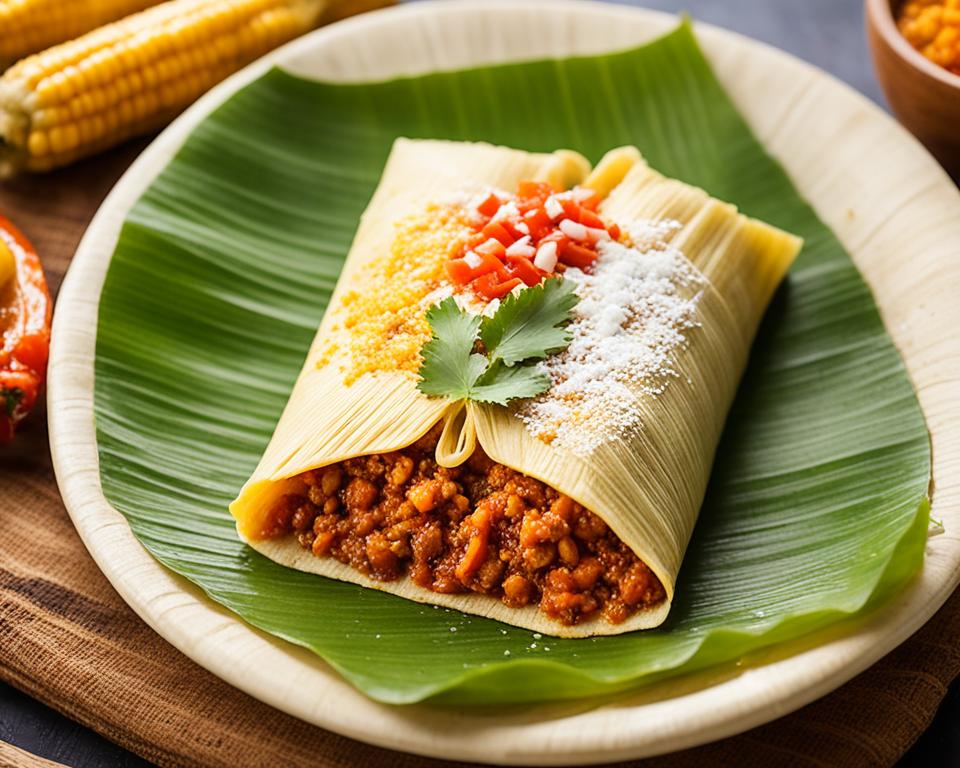
Tamales are a traditional Mesoamerican dish made from a corn-based dough (masa) that is wrapped in corn husks or banana leaves and steamed. They are a beloved part of Mexican cuisine, with a long and rich history that stretches back to pre-Columbian times. This article will explore the origins, cultural significance, and diverse varieties of tamales, providing an authentic and comprehensive guide to this iconic Mexican delicacy.
Read interesting things at : intarajyuku
Key Takeaways
- Tamales are a traditional Mesoamerican dish with a long and rich history.
- They are made from a corn-based dough (masa) that is wrapped in corn husks or banana leaves and steamed.
- Tamales are a beloved part of Mexican cuisine and hold deep cultural significance.
- Tamales can be savory or sweet, with a wide variety of fillings and regional variations.
- Tamales are often associated with important festivals and celebrations in Mexico.
What are Tamales?
Tamales are a traditional Mesoamerican food that dates back to the indigenous cultures of Mexico and Central America. The word “tamale” comes from the Nahuatl language and means “wrapped food.” Tamales are made by spreading a corn-based dough (masa) onto corn husks or banana leaves, filling it with a variety of savory or sweet ingredients, and then wrapping and steaming the package. They are a staple in Mexican cuisine and hold deep cultural significance, often being associated with important festivals and celebrations.
Definition and Origin
The origins of tamales can be traced back to the indigenous cultures of Mesoamerica, with evidence of their existence dating back to the pre-Columbian era. Tamales were an important part of the diets and cultures of civilizations like the Maya, Aztec, and Inca, who used them as a portable, durable food source.
Significance in Mexican Cuisine
Tamales hold a cherished place in Mexican culture, being deeply intertwined with important festivals, celebrations, and everyday life. They are often a central part of holidays like Christmas, Día de los Muertos, and Independence Day, where families gather to prepare and enjoy this traditional dish. Tamales have also become a beloved street food, with vendors selling them from carts and stalls, offering a convenient and delicious taste of Mexican culture on the go.
The Tamales Dough
The foundation of a delicious tamale is the masa, a corn-based dough made from masa harina, a type of dried, nixtamalized corn flour. This masa harina is the cornerstone of the traditional tamales dough, providing the essential structure and flavor that distinguishes this iconic Mexican dish.
Masa Harina: The Cornerstone
The traditional method of preparing masa involves soaking and cooking the corn kernels in a lime or ash solution, a process known as nixtamalization. This ancient technique enhances the flavor and nutritional value of the masa, resulting in a dough that is both flavorful and nutritious. The nixtamalized corn is then ground into a fine flour, known as masa harina, which is the primary ingredient used in making traditional tamales dough.
Traditional vs. Modern Masa Preparation
While the traditional method of masa preparation is highly regarded for its authentic flavor and texture, in modern times, many cooks opt for pre-made masa harina as a convenient alternative. This simplifies the process but still allows for the creation of a flavorful tamales dough. The use of pre-made masa harina does not diminish the quality or authenticity of the final tamales, as it still captures the essential characteristics of the tamales dough that has been cherished for centuries.
Tamales Wrappings
Traditionally, tamales are wrapped in dried corn husks, which serve as a natural, biodegradable packaging for these delectable Mesoamerican delights. The corn husks not only hold the tamale’s shape but also impart a subtle flavor and aroma to the final dish, enhancing the authentic experience.
Corn Husks: Nature’s Perfect Packaging
The use of corn husks as the primary tamales wrappings is deeply rooted in the cultural traditions of Mexico. These natural, fibrous casings not only provide a protective layer but also contribute to the overall taste and texture of the tamale. The corn husks’ ability to withstand the steaming process and maintain the tamale’s integrity makes them the preferred choice for many tamale enthusiasts.
Banana Leaves and Other Alternatives
While corn husks are the most common tamales packaging material, some regions of Mexico and Central America have embraced the use of banana leaves as an alternative wrapping. These large, pliable leaves offer a slightly different flavor profile and aesthetic appeal to the tamales. Additionally, in modern times, some cooks have experimented with using parchment paper or aluminum foil, though these materials do not provide the same traditional experience as the natural corn husks or banana leaves.
Tamales Fillings
The heart of a delectable tamale lies in its filling, reflecting the diverse culinary traditions of Mexico. Savory tamales often feature shredded meats like
chicken, pork, or beef
, as well as a variety of
vegetables
such as potatoes, peppers, and onions. These fillings are seasoned with an array of
spices and chili peppers
to create bold, flavorful combinations that tantalize the taste buds.
Savory Favorites
For those with a penchant for savory flavors, tamales can be filled with mouthwatering options like:
- Shredded chicken in a rich, spicy sauce
- Tender pork carnitas simmered in aromatic spices
- Slow-cooked beef barbacoa seasoned with earthy chili peppers
- Roasted vegetables like potatoes, peppers, and onions
These savory tamales are often served with a variety of sauces, salsas, and toppings that complement the bold, satisfying fillings.
Sweet Surprises
While savory tamales reign supreme, the tamale tradition also encompasses delightful sweet varieties. These indulgent fillings can include:
- Juicy pineapple or sweet corn kernels
- Plump raisins or diced apples
- A blend of sweetened masa and fragrant spices
- A drizzle of rich honey or a dusting of cinnamon sugar
These sweet tamales offer a delightful contrast to their savory counterparts, catering to those with a penchant for indulgent, dessert-like flavors.
Regional Varieties of Tamales
Tamales are a diverse and versatile dish, with countless regional variations across Mexico. Each state and even individual communities may have their own unique take on the tamale, differing in the type of masa used, the fillings, the wrapping, and the cooking methods. From the savory, mole-filled tamales of Oaxaca to the sweet, fruit-based tamales of Yucatán, the diversity of tamales reflects the rich culinary traditions and cultural heritage of Mexico.
In the northern regions, tamales are often made with a heartier, more dense masa, while the coastal areas favor a lighter, more delicate dough. The fillings can range from shredded beef or chicken in Chihuahua to the creamy, cheese-filled tamales of Sonora. In the Yucatán Peninsula, regional tamales varieties include the sweet, pineapple-stuffed tamales known as “tamales de dulce” and the savory, achiote-seasoned “tamales de Chaya.”
Crossing into central Mexico, the Mexican tamales diversity continues to shine. The mole-infused tamales of Oaxaca are a beloved specialty, while the tamales of Michoacán are known for their unique use of banana leaves as the wrapping. Further south, the tamales of Veracruz often incorporate seafood fillings, such as shrimp or crab, reflecting the region’s coastal influence.
Regardless of the specific regional tamales varieties, the diversity of this traditional Mexican dish is a testament to the rich culinary heritage and ingenuity of the country’s diverse communities. From the northern deserts to the tropical southern coasts, the Mexican tamales diversity showcases the remarkable breadth and depth of this iconic Mesoamerican food.
Tamales: A Cultural Icon
Tamales hold a cherished place in Mexican culture, being deeply intertwined with important festivals, celebrations, and everyday life. They are often a central part of holidays like Christmas, Día de los Muertos, and Independence Day, where families gather to prepare and enjoy this traditional tamales cultural icon dish.
Festivities and Traditions
The preparation and consumption of tamales are deeply rooted in Mexican tamales festivities and traditions. During the holiday season, families come together to make tamales, a time-honored ritual that strengthens bonds and celebrates cultural heritage. Tamales are also a staple at events like weddings, baptisms, and quinceañeras, where they are served as a sign of hospitality and shared enjoyment.
Tamales as Street Food
In addition to their prominence in festivities, tamales have also become a beloved tamales as street food in Mexico. Vendors selling tamales from carts and stalls offer a convenient and delicious taste of Mexican culture on the go. These portable, savory or sweet treats have become a staple of urban life, allowing people to indulge in the flavors of tamales while navigating the bustling streets.
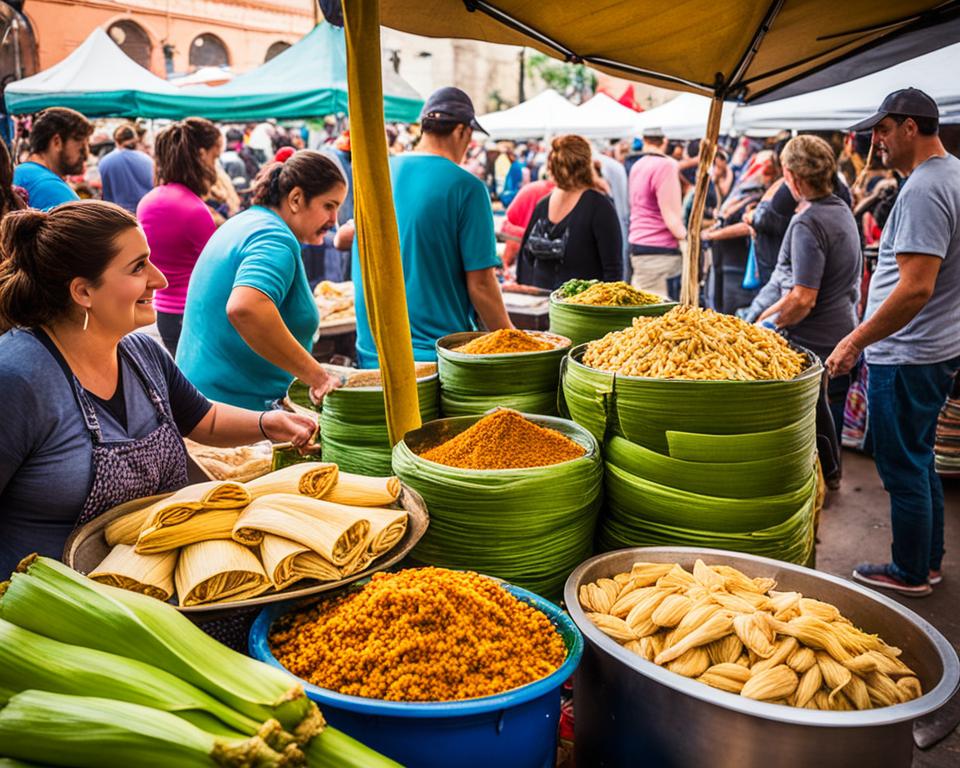
Tamales
The origins of tamales can be traced back to the indigenous cultures of Mesoamerica, with evidence of their existence dating back to the pre-Columbian era. Tamales were an important part of the diets and cultures of civilizations like the Maya, Aztec, and Inca, who used them as a portable, durable food source.
Mesoamerican Origins
The tamales we know and love today have their roots firmly planted in the culinary traditions of Mesoamerica. These corn-based delicacies were a staple for many ancient civilizations, who recognized the versatility and convenience of these wrapped foods. From the Maya to the Aztec, tamales were woven into the fabric of daily life and important cultural celebrations.
Evolution Through Centuries
Over the centuries, the recipe and preparation of tamales have evolved, incorporating influences from Spanish and other culinary traditions, while still maintaining their essential Mesoamerican roots. As the dish spread throughout Mexico and beyond, it adapted to local ingredients and cooking methods, giving rise to the diverse array of tamale varieties we enjoy today. Yet, even with these adaptations, the core essence of tamales – the corn-based dough, the wrapped presentation, and the deep cultural significance – has endured through the ages.
Cooking Techniques for Tamales
Tamales are typically cooked using one of two main methods: steaming or boiling. The traditional steaming technique involves stacking the wrapped tamales in a steamer basket and cooking them over simmering water until the masa is firm and cooked through. This method is often preferred as it better preserves the texture and flavor of the tamale.
A more modern approach is boiling the tamales, where the wrapped packages are submerged directly in boiling water. While this technique can produce delicious results, the steaming method is generally considered superior in maintaining the authentic qualities of the traditional tamales preparation.
Whether opting for the time-honored steaming or the convenience of boiling, both tamales cooking techniques can result in flavorful, satisfying tamales that showcase the rich culinary heritage of Mexico. The choice often comes down to personal preference and the desired balance of traditional authenticity and modern modern tamales preparation methods.
Serving and Presenting Tamales
Tamales are typically served straight from the steamer or pot, still wrapped in their traditional corn husks or banana leaves. This method of presentation not only preserves the tamales’ heat and texture but also adds to the overall dining experience, allowing diners to unwrap the delicious, steaming-hot package themselves.
Accompaniments and Garnishes
To enhance the flavors of the tamales, they are often accompanied by a variety of sauces, salsas, and toppings that complement the fillings. Common accompaniments include spicy red or green sauces, creamy crema (Mexican sour cream), shredded cheese, pickled vegetables, and fresh herbs. These tamales accompaniments and tamales garnishes allow diners to customize and personalize their tamales serving, creating a truly unique and satisfying culinary experience.
| Savory Tamales Accompaniments | Sweet Tamales Accompaniments |
|---|---|
| Spicy Red or Green Salsa | Dulce de Leche |
| Crema (Mexican Sour Cream) | Sweetened Condensed Milk |
| Shredded Cheese (Queso Fresco) | Honey |
| Pickled Onions or Jalapeños | Fruit Compotes |
| Chopped Cilantro | Whipped Cream |
By presenting tamales alongside these complementary tamales accompaniments and tamales garnishes, the traditional serving tamales experience is elevated, allowing diners to explore the full range of flavors and textures that this beloved Mexican dish has to offer.
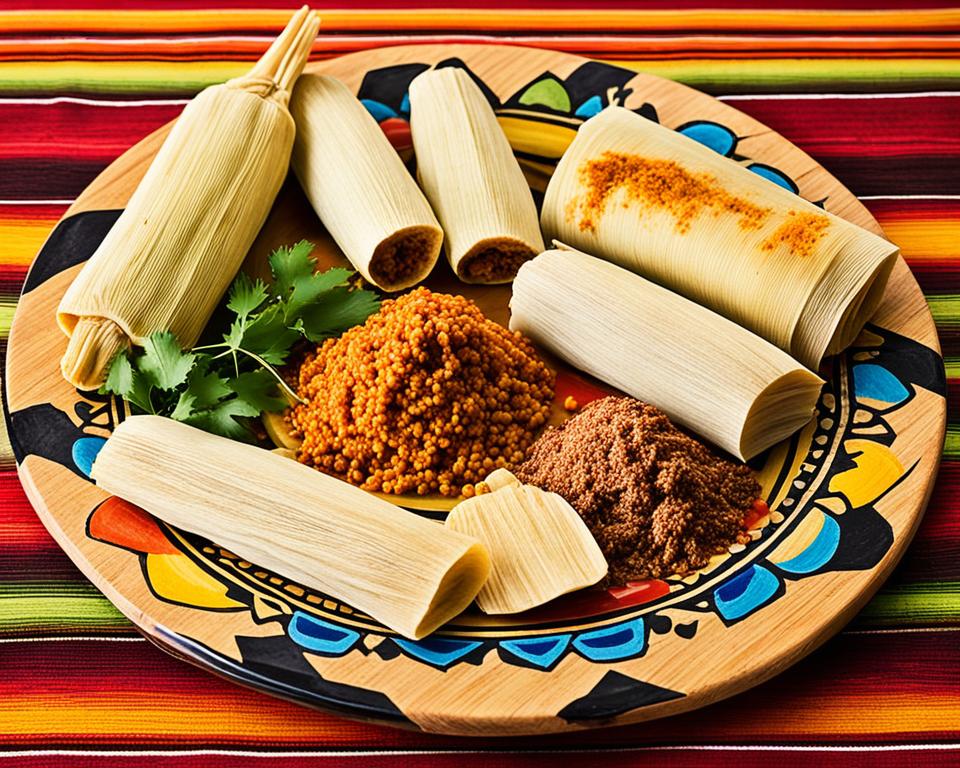
Nutritional Value of Tamales
Tamales can be a relatively healthy and balanced meal, especially when made with wholesome ingredients. The corn-based masa provides complex carbohydrates, while the fillings can be rich in proteins, vitamins, and minerals. However, tamales can also be high in calories, fat, and sodium, depending on the specific ingredients and preparation methods.
Healthy Ingredients
To make tamales a more nutritious option, it’s important to focus on incorporating plant-based fillings and limiting the use of fatty meats and excessive salt. Vegetables, legumes, and even lean proteins can provide a balance of nutrients while keeping the calorie and fat content in check.
Portion Control
Portion control is also key when it comes to enjoying tamales, as a single tamale can be quite filling. By being mindful of portion sizes and pairing tamales with a fresh salad or other light sides, you can still savor the flavors of this traditional Mexican dish while maintaining a balanced and healthy meal.
Tamales in Contemporary Mexican Cuisine
While traditional tamale recipes remain beloved, contemporary Mexican chefs and home cooks are also exploring innovative ways to incorporate tamales in contemporary mexican cuisine. By experimenting with new fillings, incorporating global flavors, and employing creative cooking techniques, tamales fusion is elevating this iconic dish to new heights.
From innovative tamales flavors that blend Mexican ingredients with international influences to inventive sweet or savory variations, the versatility of tamales allows for endless culinary creativity and exploration. Chefs are reinventing the tamale by drawing inspiration from diverse global cuisines, resulting in fusion creations that surprise and delight.
Whether it’s a tamale that fuses Mexican mole with Asian spices or a decadent dessert tamale filled with tropical fruits, these modern interpretations showcase the continued evolution of tamales in contemporary mexican cuisine. By honoring traditional techniques while embracing bold, unexpected flavor combinations, today’s tamale artisans are pushing the boundaries of this beloved Mesoamerican staple.
Tamales Around the World
The popularity of tamales has spread far beyond the borders of Mexico, with versions of this traditional dish appearing in various cuisines around the world. As tamales have been adopted and adapted by different cultures, they have taken on new and unique forms, often incorporating local ingredients and preparation methods. From the tamale-inspired dishes of Latin American countries to the creative interpretations found in the United States and beyond, the global influence and adaptability of tamales reflect their enduring appeal and cultural significance.
Global Influence and Adaptation
The tamales around the world have evolved to incorporate diverse flavors and techniques, showcasing the versatility of this Mesoamerican staple. In many Latin American nations, such as Guatemala, El Salvador, and Peru, variations of tamales have become integral to the local culinary landscape, often using unique regional ingredients and cooking methods. Similarly, the tamales global influence has extended to the United States, where creative chefs and home cooks have experimented with tamales adaptation, blending Mexican traditions with American and international flavors.
From the savory, mole-infused tamales of Oaxaca to the sweet, coconut-based versions found in the Philippines, the diversity of tamales around the world is a testament to their enduring appeal and cultural significance. As tamales continue to be embraced and reinterpreted by global communities, they serve as a delicious reminder of the power of food to transcend borders and bring people together.
Tips for Making Perfect Tamales
Crafting delicious, authentic tamales requires attention to detail and a bit of practice. Some key tips for achieving tamale perfection include using high-quality masa harina, properly seasoning the filling, ensuring the right consistency of the dough, and mastering the steaming or boiling process.
Properly wrapping the tamales in corn husks or banana leaves is also essential for achieving the desired texture and flavor. With patience and a little experimentation, anyone can learn to make tamales that rival the best street vendors and home cooks in Mexico.
| Tip | Importance |
|---|---|
| Use High-Quality Masa Harina | The foundation of a perfect tamale is the masa, and using a premium-quality masa harina ensures a smooth, flavorful dough. |
| Properly Season the Filling | Seasoning the fillings with a blend of spices, herbs, and chili peppers adds depth and authenticity to the tamale experience. |
| Achieve the Right Dough Consistency | The masa should be light, airy, and spreadable, allowing the tamale to steam and cook evenly. |
| Master the Steaming or Boiling Process | Proper cooking technique, whether steaming or boiling, is crucial for achieving the perfect tamale texture and flavor. |
| Wrap Tightly in Corn Husks or Banana Leaves | Wrapping the tamales in the traditional packaging not only holds their shape but also imparts a unique aroma and taste. |
With these tips for making perfect tamales, anyone can become a master of this beloved Mexican delicacy. Experiment with different fillings, seasonings, and wrapping techniques to find your personal tamale perfection.
Tamales: A Culinary Journey
Tamales are a cherished part of Mexico’s rich culinary heritage, a testament to the ingenuity and cultural resilience of the Mesoamerican people. As we explore the history, diversity, and evolution of this iconic dish, we are reminded of the importance of preserving traditional recipes and techniques while also embracing the creative spirit that allows tamales to continue adapting and thriving in the modern world.
Preserving Traditions
The traditional methods of preparing tamales, from the nixtamalization of the corn to the precise wrapping and steaming techniques, are crucial in maintaining the authentic flavors and textures that have captivated generations of Mexicans. By preserving tamales traditions, we honor the rich cultural legacy that has shaped this beloved dish over centuries.
Evolving Flavors
While respecting the foundations of tamale-making, contemporary chefs and home cooks are also exploring innovative ways to incorporate new ingredients and flavors. From fusion tamales that blend Mexican staples with international influences to inventive sweet or savory variations, the versatility of tamales allows for endless culinary creativity and exploration. This evolving tamales flavors reflects the dynamic and adaptable nature of Mexican cuisine.
Whether savoring a classic, time-honored tamale or delighting in a bold, innovative variation, the journey of this humble, wrapped delicacy is a celebration of the enduring power of Mexican cuisine and culture.
Conclusion
In conclusion, tamales are a truly remarkable and multifaceted element of Mexican cuisine and culture. From their Mesoamerican origins to their contemporary adaptations, these corn dough-wrapped delicacies have captivated the hearts and palates of people around the world. As we’ve explored the rich history, diverse flavors, and cultural significance of tamales, it’s clear that this iconic dish will continue to evolve and inspire, preserving its traditional roots while embracing new and innovative interpretations.
Whether enjoyed during festive celebrations or as a beloved everyday treat, tamales remain a cherished and integral part of the Mexican culinary experience. As the journey of this humble, wrapped delicacy continues, we are reminded of the enduring power of Mexican cuisine and culture, and the importance of preserving traditions while also embracing the creative spirit that allows tamales to thrive in the modern world.
The conclusion of our exploration into the world of tamales reaffirms the significance of this iconic dish, not only as a culinary delight but as a cultural ambassador, embodying the rich heritage and enduring spirit of Mexico. As we savor the last bite, we are left with a deep appreciation for the tamale’s past, present, and future, and the certainty that this quintessential Mexican delicacy will continue to captivate and inspire for generations to come.
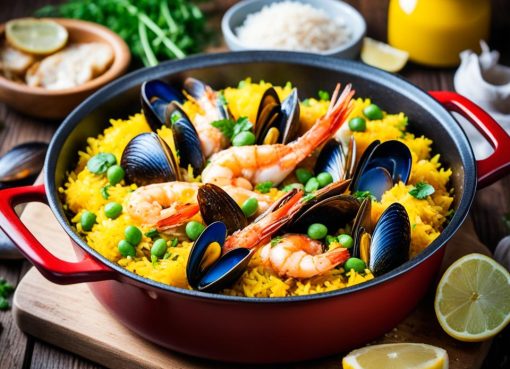

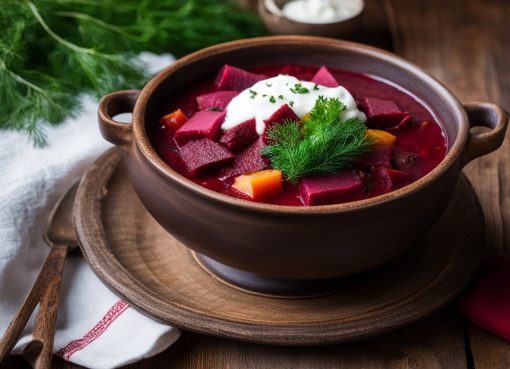
Leave a Comment